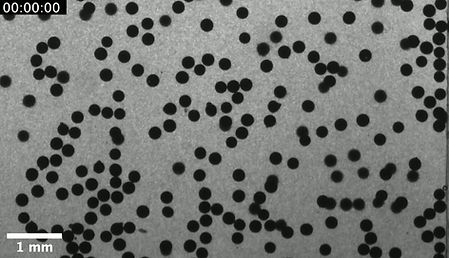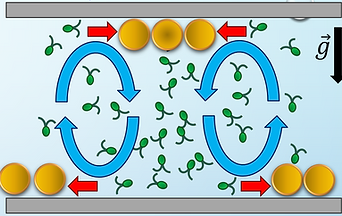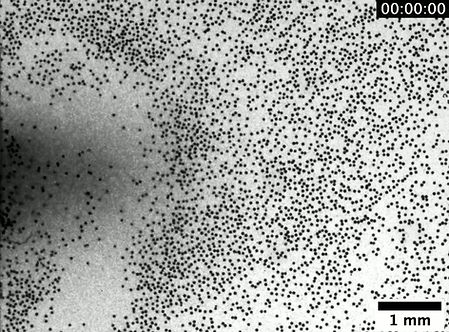
Julien Bouvard

Microswimmers to organise passive particles
Biological micro-swimmers, such as bacteria or micro-algae, are able to swim in a preferred direction if they sense a more favourable environment. The attractive stimulus can be chemicals, like nutrients or oxygen, temperature, light or even gravity. But whether they swim in a targeted or random motion, these micro-organisms are directly impacting their environment in doing so.
The goal of the following projects is to better understand the interactions that can occur between biological micro-swimmers and their direct environment.


Dynamical clustering
The phase separation of mixtures of active and passive particles has recently become a subject of interest. There has been some theoretical and numerical studies, but not many experimental ones.
With Harold Auradou and Frédéric Moisy, we managed to conduct such experiments and show that motile bacteria are able to induce the clustering of passive micron-sized beads on a surface. The bacteria are responsible for the beads aggregation through two mechanisms:
-
First, the beads are getting moved around by the bacteria. At long times, this can be characterised as a diffusive-like motion, with an effective diffusivity 2 to 3 orders of magnitude higher than the one of Brownian motion.
-
Second, the bacteria induce a short-range attraction between the beads.
These two phenomena result in an aggregation of the beads seemingly similar to Ostwald ripening processes, with a cluster size slowly increasing with time with no apparent saturation.
Ostwald-like ripening in the two-dimensional clustering of passive particles induced by swimming bacteria
J. Bouvard, F. Moisy and H. Auradou. Phys. Rev. E, vol. 107, no 4, p. 044607 (2023)
Phototactic transport by micro-algae
Micro-algae Chlamydomonas reinhardtii are highly motile micro-organisms which respond very fast to changes in light intensity. Depending on the intensity, they can either exhibit positive or negative phototaxis.
With Taha Laroussi, Gabriel Amselem, Mojtaba Jarrahi and Victoria Nicolazo, we investigate the rich phenomena happening when some passive particles are added to a concentrated suspension of C. reinhardtii. While gathering to swim away from the high light intensity, the algae trigger the formation of bioconvection cells. These rolls displace the beads, either by attracting them or by repelling them away depending on their density. We then control the position of the rolls by modulating the light stimuli, effectively transporting hundreds of large beads in a targeted direction.
Controlling the collective transport of large passive particles with suspensions of microorganisms
T. Laroussi*, J. Bouvard*, É. Jambon-Puillet, M. Jarrahi, G. Amselem. arXiv (2025)


